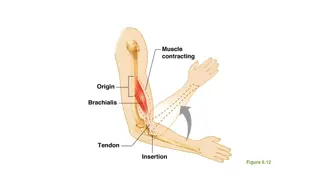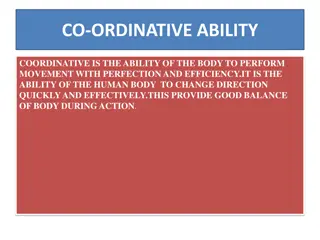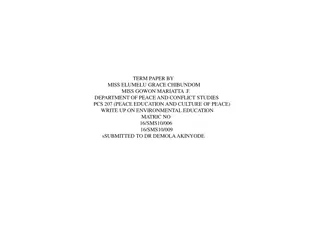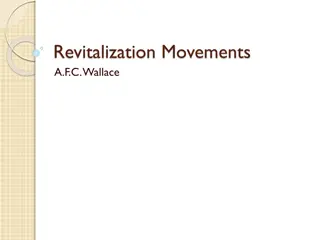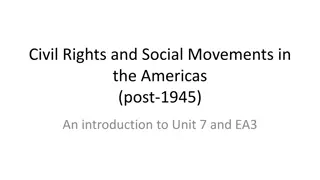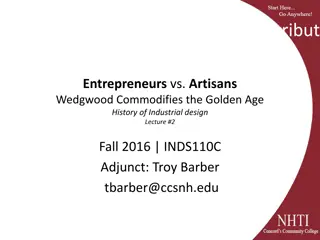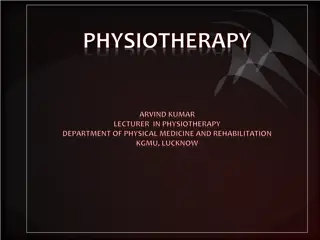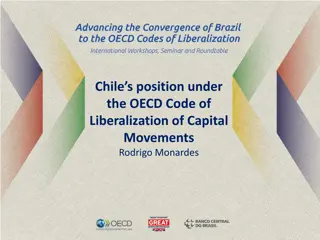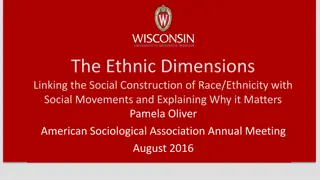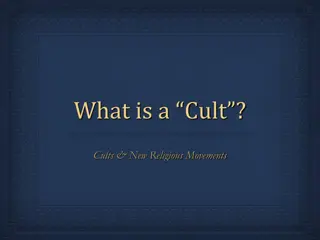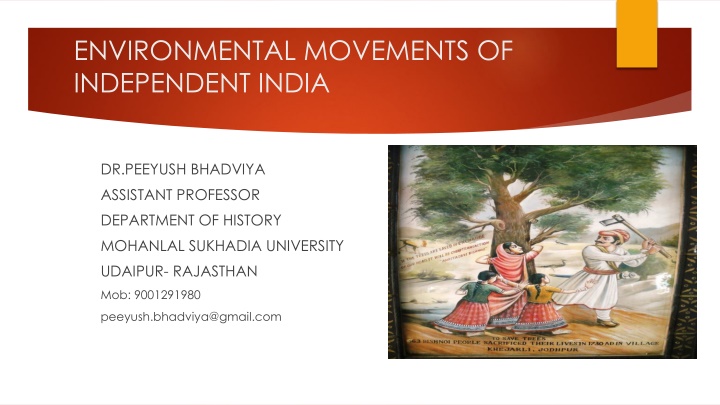
Environmental Movements of Independent India - Narmada Bachao Andolan and Its Impact
Explore the impactful Narmada Bachao Andolan in the context of environmental movements in independent India, highlighting the struggle against large dams, the role of activists like Medha Patkar, and the ongoing efforts for rehabilitation and environmental justice.
Download Presentation

Please find below an Image/Link to download the presentation.
The content on the website is provided AS IS for your information and personal use only. It may not be sold, licensed, or shared on other websites without obtaining consent from the author. If you encounter any issues during the download, it is possible that the publisher has removed the file from their server.
You are allowed to download the files provided on this website for personal or commercial use, subject to the condition that they are used lawfully. All files are the property of their respective owners.
The content on the website is provided AS IS for your information and personal use only. It may not be sold, licensed, or shared on other websites without obtaining consent from the author.
E N D
Presentation Transcript
ENVIRONMENTAL MOVEMENTS OF INDEPENDENT INDIA DR.PEEYUSH BHADVIYA ASSISTANT PROFESSOR DEPARTMENT OF HISTORY MOHANLAL SUKHADIA UNIVERSITY UDAIPUR- RAJASTHAN Mob: 9001291980 peeyush.bhadviya@gmail.com
It can be divided into three parts 1 Related to Water: Narmada Bachao Andolan, Tihri, Chilka, Ganga 2 Related to Forest: Chipko, Appiko, Silent Valley 3 Related to Land: Narmada, Tihri, Save Seeds
NARMADA BACHAO ANDOLAN NBA was the movement against the building of large dams over the Narmada and its tributaries. It involved human activist, farmers, Adivasis, and people living on the banks of Narmada river. The whole project consisted of 30 major , 135 medium, and 3000 small dams over Narmada and its tributaries. It was expected that the project would provide water to around 40 million people, irrigation and electricity to people in this region. On the other side it was expected that it would submerge 37000 hectare land of three states Gujarat, Madhya Pradesh and Maharashtra, which includes 13000 hectare of forest land. About 1 lakh people from 248 villages need to be rehabilitated.
There was a widespread agitation against the Narmada Project. During 1980-87 Anil Patel of Ank Vahini fought for the rehabilitation rights of the affected people. In 1985 , after hearing about the Sardar Sarovar Dam, Medha Patskar and her colleagues visited the project site and noticed that project work being checked due to an order by the Ministry of Environment and Forests, Government of India. The reasons for this was cited as non- fulfillment of basic environmental conditions and the lack of completion of crucial studies and plans.
It took a different turn in 1989, when at Harsud (M.P.) there was an agitation of 45000 people. In Dec. 1990 NBA conducted a struggle march. 6000 persons marched from Rajghat to M.P. and Gujarat. In 1991 Central Commission was established for inspecting Dam issue. It said that project s work is not going according to the norms of World Bank and Indian Government. In 1994 World Bank left the project. State Government continued the project. Medha Patekar did hunger strike against it. In 1995 Supreme Court ordered stopping of Dam work till rehabilitation issue is resolved.
On 18 th October 2000 Supreme Court gave approval for Dam and allowed 90 m height of Dam, which could be raised to 138 m in future. Moreover SC instructed state governments to establish 1 Primary School, 1 panchayat Ghar, 1 Hospital, water and electricity and worshipping place for every 500 persons. In April 2006, there were spurts in NBA when Dam height was raised from 110 m to 122 m. Due to agitations SC ordered full rehabilitation , otherwise warned to ban the construction.
TIHRI DAM ANDOLAN TIHRI DAM was planned in 1972 on Bhagirathi and Bhilangna river in present Uttarakhand, having height 260.5 m, being one of Asia s biggest dam. It would provide 620 crore units of electricity to the people of Uttarakhand, Delhi and U.P.
This project was opposed by many people under the leadership of Sunderlal Bahuguna. 23 villages were to be fully submerged and 72 partially submerged. 85600 people required rehabilitation.1600 hectare land would be submerged. Moreover it could not withstand earthquake of 8 on reichter scale. INTACH raised its voice over the issue. TEHRI DAM agitation raised the issues of rehabilitation,environment, safety, village life, forest loss, wild life threat, and cultural impact.
CHILKA MOVEMENT It is a salt water lake in Odisha having 72 km length and 25 km width. 50000 fisherman were dependent on it .However the natural rights of fisherman were being challenged in 1980 s when traders, politicians, middlemen tried to occupy the area. Problem became more serious when in 1986 , J.B.Patnaik gave 1400 hectare of area to Tata Company in joint operation with state government In 1991 state government ordered that Chilka fisheries be divided into two types capture and culture. Capture rights were given to fisherman and culturing rights were meant for non-fishermen and other villagers not members of the primary cooperative groups.
SHRIMP PRODUCTION Informal groups of students from Utkal University in Bhubaneshwar began an intense awareness exercise for villagers on the project s environmental impact and ill-effects. In 1991, a forum namely the Chilka Suraksha Parishad was formed for gathering public opinion and debate on the issue of the state s big prawn culture project. Chilka Matsyajibi Mahasangha was formed comprising 122 villages. Lter on in 1992 Chilka Bachao Andolan began as an extension of CMM. This got the support of several civil societyorganizations that together highlighted the project s threat to the environment.
ON 15 th Jan.1992 a mass meeting at Gopinathpur village led to the development of big movement. Kranti Darshi Yuva Sangam of students demolished construction work done by TATA in lake. Understanding the gravity Government cancelled the contract made with TATA and restored the previous position.
CHIPKO MOVEMENT CHIPKO MOVEMENT was started in 1970 in present Uttarakhand to save trees. Since people hugged trees in order to save them, it was called Chipko Movement. Angu trees were grown in Chamoli and surrounding areas which were light and useful in many products. Villagers and forest dwellers used its wood for their activities. It was very useful for making sports equipments. State government gave the rights of 2451 trees to Symond company which was a direct attack to the historic rights of people.
Opposition began under local leader Chandi Prasad Bhatt. On 14 th Feb. 1974 an assembly gathered to agitate against the goverments decision.There were processions in which students also participated. They asked government for compensation. Government called leaders for talks at Gopeshwar district HQ. This opportunity was used by company to send their men for cutting trees. There were only women at that time in village.27 women under Gora Devi resisted their attempts by hugging trees.
Foot Marches were organized in Uttarakhand. Under rhe leadership of Sunderlal Bahuguna the movement spread to Uttarakashi district also. Under pressure Government instituted a high level commission on 9 May 1974, which in its verdict asked government to ban cutting of trees in affected forest for 10 years. The Movement was successful one.


